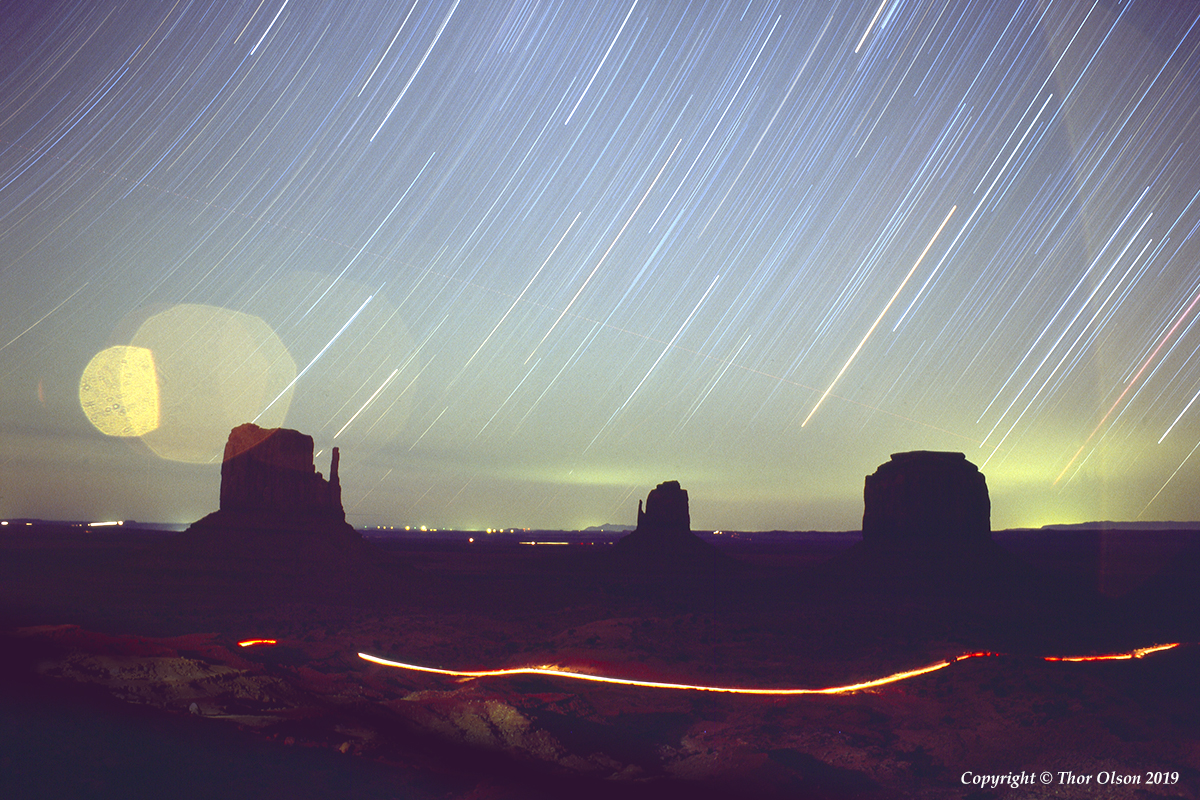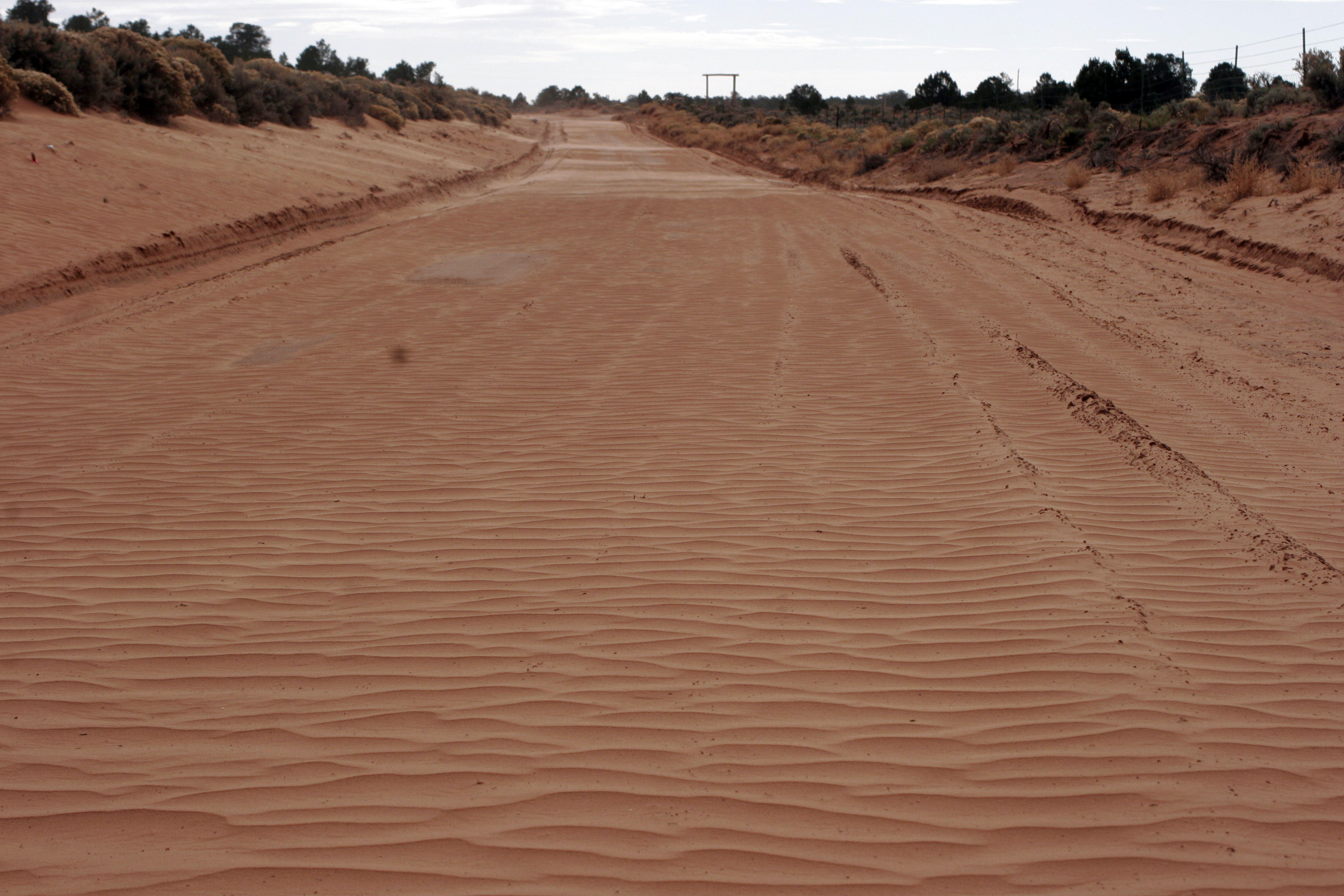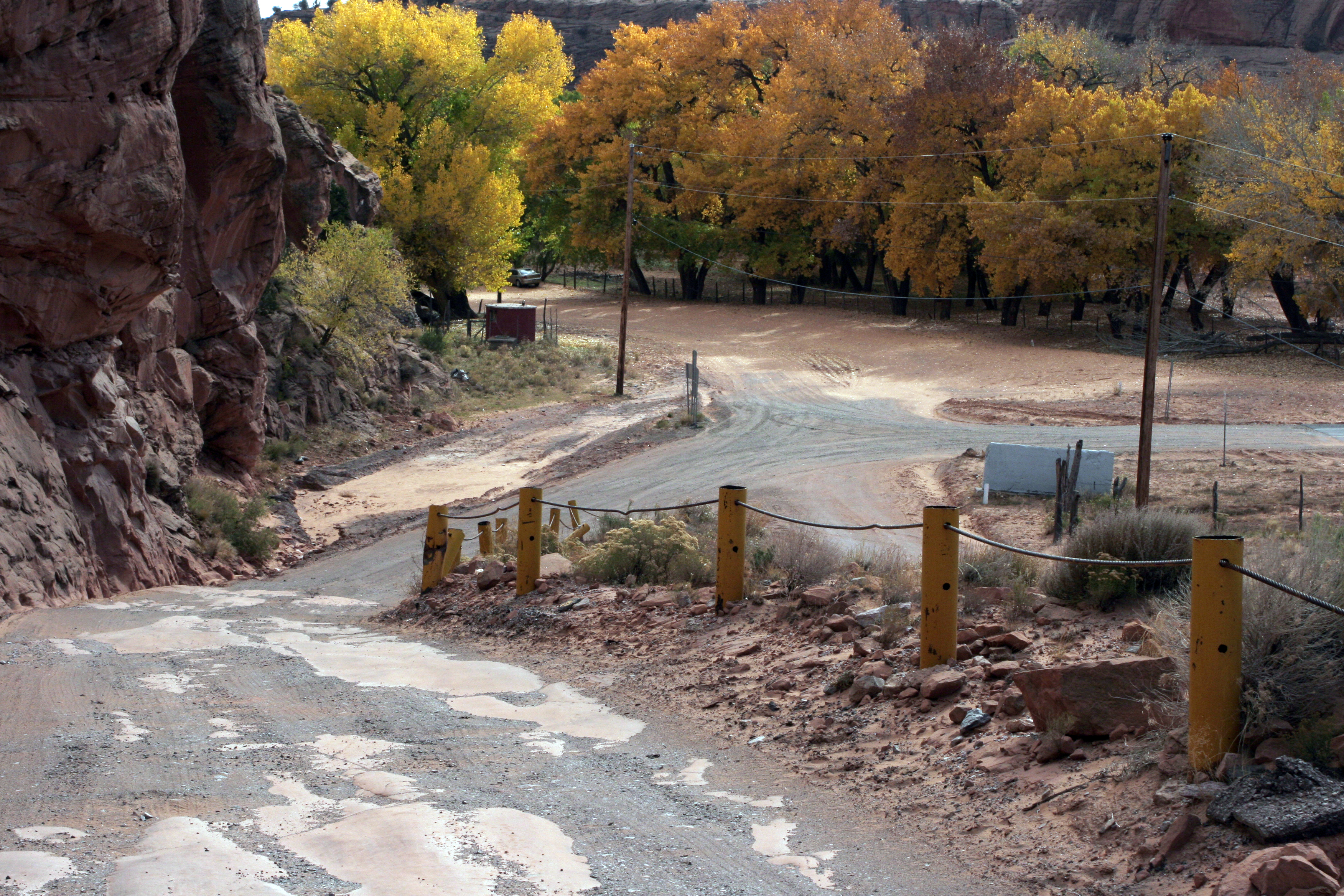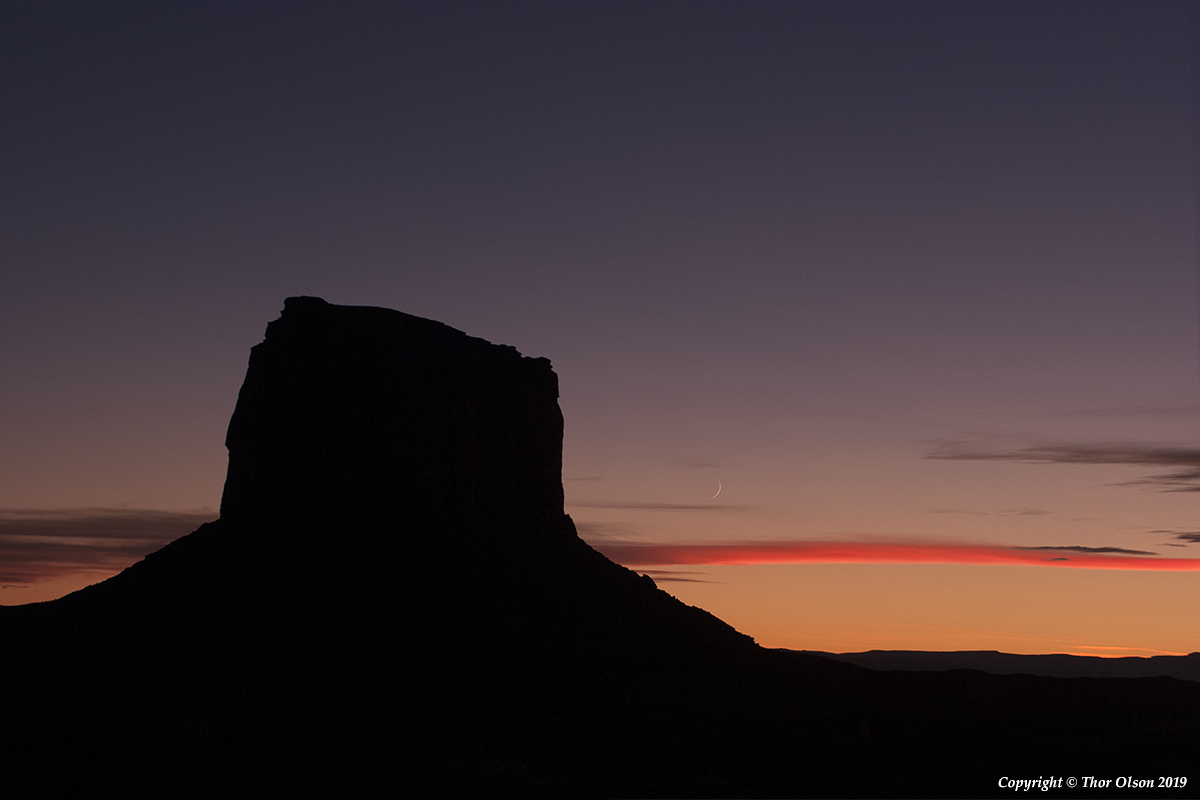
Nov 3, 2005, Monument Valley AZ
Pentax 6×7, E200 push 1-stop, 90 minutes at f/4
I am staying at the Hampton Inn in Kayenta Arizona. It is not your usual traveler’s stopping place that I have become accustomed to in my business travels. It is an attractive contemporary adobe building, tastefully appointed with beautiful Navajo art and artifacts. Gentle native music is piped to the public areas. An interesting Navaho outdoor exhibit is also well presented. The native American flavor is augmented by modern conveniences—full breakfast, wireless internet, pool, patio, and an attractive and comfortable lobby.
Since the cloudy skies had kept me in, I suffered another full night of sleep. Now, unexpectedly alert at an early hour, I noticed all of these niceties at breakfast while I started planning my day.
I also noticed an older couple, or rather, they noticed me. And for some reason, maybe because I was alone at a table making entries in my notebook, they decided that I needed company.
They were gregarious and garrulous, she a travel writer of twenty years for the Chicago Tribune, still writing columns for various papers, and he an attorney, no longer practicing, both of them skilled with words and language, both widely travelled. They were adorned with native attire: turquoise necklaces, silver wristbands, belt adornments. She wore a flowered dress, hat, and moccasins.
They told me of coming here every year for fifty to replenish their souls, wandering down backroads to old trading posts and remote locations.
In recent years however, they had been warned to avoid certain roads. Drug dealers are unforgiving and have killed police and bystanders alike for reasons that make sense only to them. He (Jim, the lawyer), had once carried firearms for protection, but now doesn’t—not because they’re illegal, but because they’re impotent against the firepower of drug dealers.
This gave me pause as I considered my typical nighttime activities. I should probably avoid remote roads to avoid inadvertently crossing paths with some late night transaction. But that would be restrictive, the best dark sky sites are found on such roads.
I listened to more. They had stories to tell, fascinating facts, history and lore, and each triggered a further story from the other, taking turns to tell them to me. I was quite impressed, and decided to try and follow some of their directions to the local destinations they described.
Among them was the Shonto trading post. The road to it was covered with rippled sand, an advance of the desert onto our human trails. The last section of road down to the valley was a rough rock ledge, blasted from the cliff with spent guard posts—cabled together but eroded and yanked out of their moorings.


The trading post itself was mostly empty shelves, but provided bread and milk to local customers. When there is nothing else, this is the center of mercantile life and the focus for goods that cannot otherwise be hunted or farmed.
And it was apparent that I stood out from the local customers. One of them, standing outside the trading post sized me up and had to find out “Where are you from, Alaska?” I knew that I would never pass for a local, my complexion and attire was not frequently seen here, but I must really stand out, even from the other tourists!
I returned from my excursion and on the way back encountered the structure that supplied coal cars from the nearby Peobody mine via tall storage elevators. It had been lit up like a giant diamond ramp the night I drove in. The elevators were fed by a conveyor belt from the mine and in turn fed rail cars on a train powered by overhead 500 kilovolt electricity! [Update 2019: the facility is closing due to the diminishing use of coal in the U.S.]
I have plans for tonight. I will test my “twilight exposure model” by taking pictures with my digital camera and comparing with the sun elevation data that I downloaded from the US Naval Observatory. In preparation, I cleaned the image sensor. I did not have the proper tools to do this. When the nearest camera store is hundreds of miles away, one must improvise, so with the turkey baster I had acquired at the local market, I made quick blasts of air to blow off the dust particles. It seemed to work!
As the sun set, I positioned myself to take pictures of the rapidly darkening sky toward the east. I managed to take a few exposures according to my prescribed time schedule and exposure guide, but got distracted by the very young moon to the west. I abandoned the experiment in favor of the beautiful scene behind me.

With the sun having set, but the sky in that limbo between civil twilight and astronomical twilight, (dusk and dark), I went to the nearby Goulding’s resort and enjoyed dinner, hoping that the clouds and wind would go away while I refueled.
The clouds dissipated, but the wind continued. When I returned from my dinner break to the campsite (that I had booked for another day), I decided that I should try and find a windbreak so that my telescope would be protected from the image-blurring gusts. It was a short hike to the visitor center, where I found a position on the veranda behind one of the walls where a relative calm protected my tripod.
During the next six hours I was able to take a number of astrophotos through the telescope. The residual wind was still a hassle, finally dying down after 1:00 am. I had two targets, the Orion Nebula and the Cone Nebula. Unfortunately, my tracking skills, even in the reduced wind gust, were not up to the task, and I would later find that the exposures were not stable enough to work with. Nevertheless, it is always good when one can practice the art.
Meanwhile, during the time I busied myself with the details of making these exposures, I had set up my film cameras to record even longer durations. They yielded lengthy star trails over the monuments, which are really only a blip of time compared to their geologic history.



Pingback: Monuments at Night, Nov 2 | Thor's Life-Notes
Pingback: Monuments at Night, Nov 4, early | Thor's Life-Notes